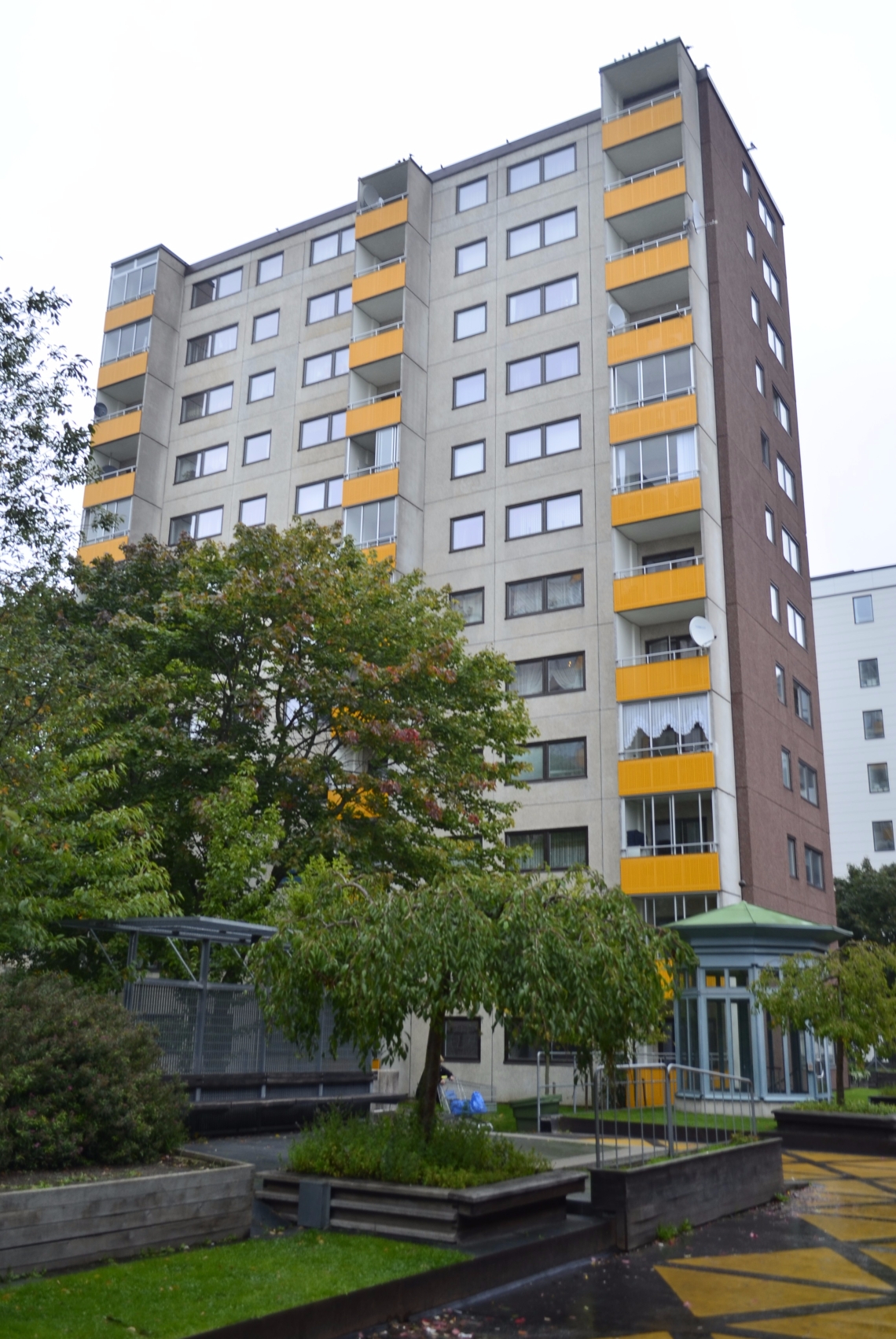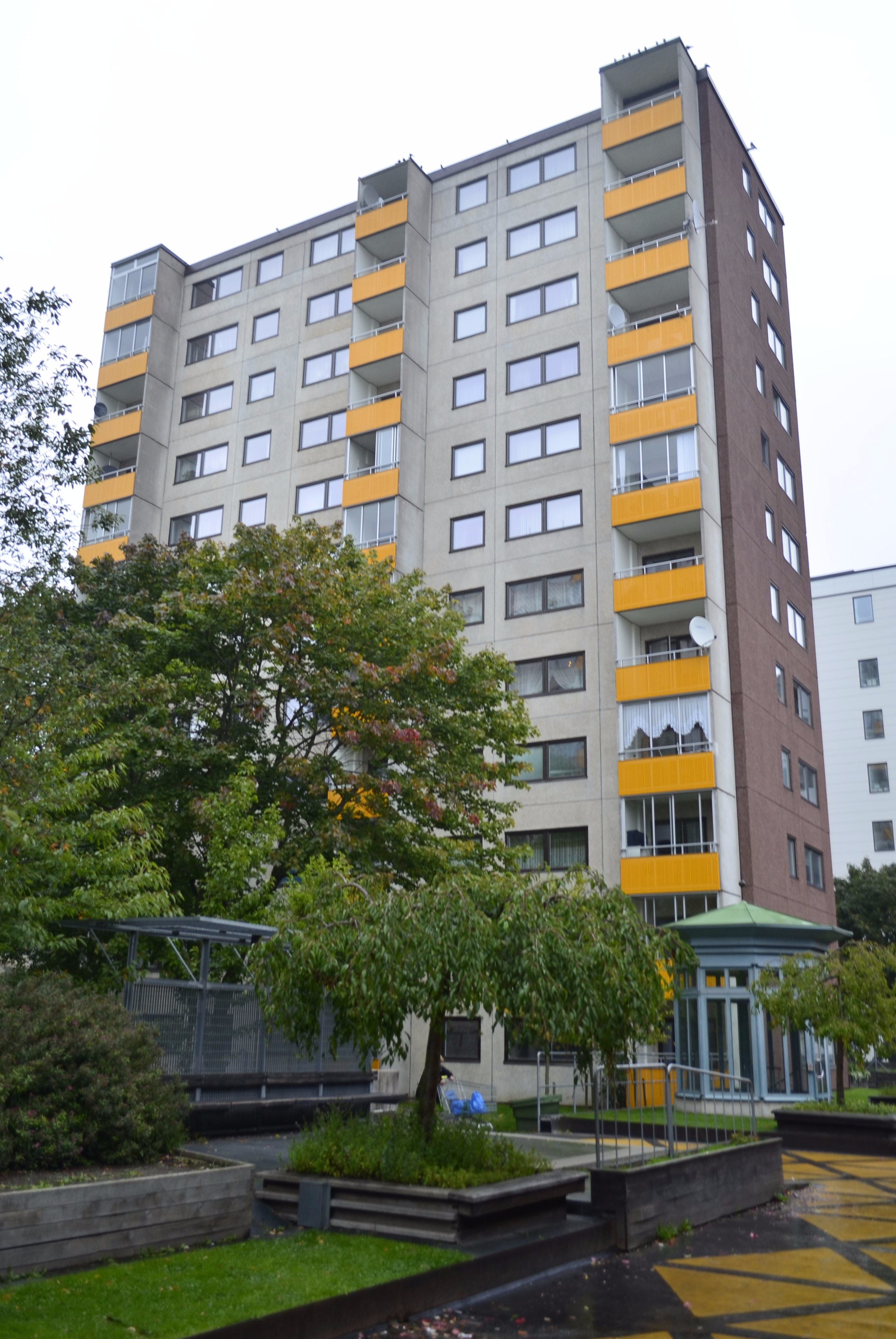
What unites Britain, Canada and Sweden when it comes to housing regeneration is that each country is facing a dilemma: fiscal constraints that have led to a gradual withdrawal of public funding, as construction and land costs have increased; and an inheritance of postwar public housing, much of which needs or soon will need investment to extend its lifespan.
What we have often seen in the UK is schemes that seek to redevelop estates to deliver more homes, an approach that can attract private investment but that often disadvantages existing residents. In many other places, a densification strategy of this kind cannot work, either because local housing markets are weak or because estates are already at high densities.
In Stockholm, a recent approach to this question focuses on how to fund improvements to existing homes and investments in communities, without passing on the financial burden to residents.
Renovation is often used by housing companies in Sweden to increase rents – the Swedish rent-setting system is a negotiation between the tenant union and landlords, and only an increase in the objective “use value” of a home can justify an above inflation rent increase. Housing companies argue that the rent-setting system has not allowed them to build up reserves to fund the renovations now needed, and many tenants have seen rents suddenly rise by 60 per cent to cover the costs of the work.
I have visited a number of schemes that are seeking to improve and upgrade existing homes in a way that benefits existing residents by avoiding or easing the rent increases needed to fund renovation, without relying on public subsidy. This is a model of “boosted maintenance” – delivering improvements to plumbing, heating, insulation, waste disposal systems, and often including new kitchens, bathrooms, redecoration, and changes to the layout of apartments to meet modern needs. It has been developed as housing providers have sought to innovate in the way they approach renovation, and municipalities have applied political pressure to protect tenants.
Not all buildings need these improvements, and not all tenants of all buildings want the same level of work done to their homes. So this model relies on a deep engagement with tenants to identify their specific requirements, in order to meet their needs but also to invest more wisely. Some examples include:
- At Fittja, acute technical problems with a tower block (above) have been addressed via an ongoing dialogue with residents to deliver small and strategic changes. A new community meeting place has been created in the ground floor, energy efficiency improvements have been made, and the plumbing system has been updated – without any rent increases for tenants of the buiding’s 72 apartments.
- In Knivsta in Uppsala County, just north of Stockholm, nearly 500 homes are being renovated, with a low annual rent increase (of 1.7 per cent) for ten years, made possible because the tenant union is experimenting with a new mode of rent negotiation here. The process was shaped through workshops with residents, and the result is a ten year ‘staircased’ rent increase that will allow existing residents to stay put in the renovated apartments.
- A more wide-ranging scheme at Bergsjön in Gothenburg involves interior and exterior renovation, provision of new community infrastructure and measures to reduce crime, such as covering communal spaces. An ongoing conversation has been held with all residents on a one to one basis to identify their particular needs and views on the direction of the work, which has resulted in modifications to plans over time. Tenants are also able to choose elements of interior renovation work, such as kitchen finishes. As at Knivsta, rent increases are modest and being spread over a long period (nine years) to ensure residents are not displaced.
There are limits to this approach – some blocks need more investment than existing tenants alone can cover through manageable rent increases. But it does show that in working with residents, it is possible to deliver improvements to homes and investments in communities without placing a heavy burden on existing residents.

